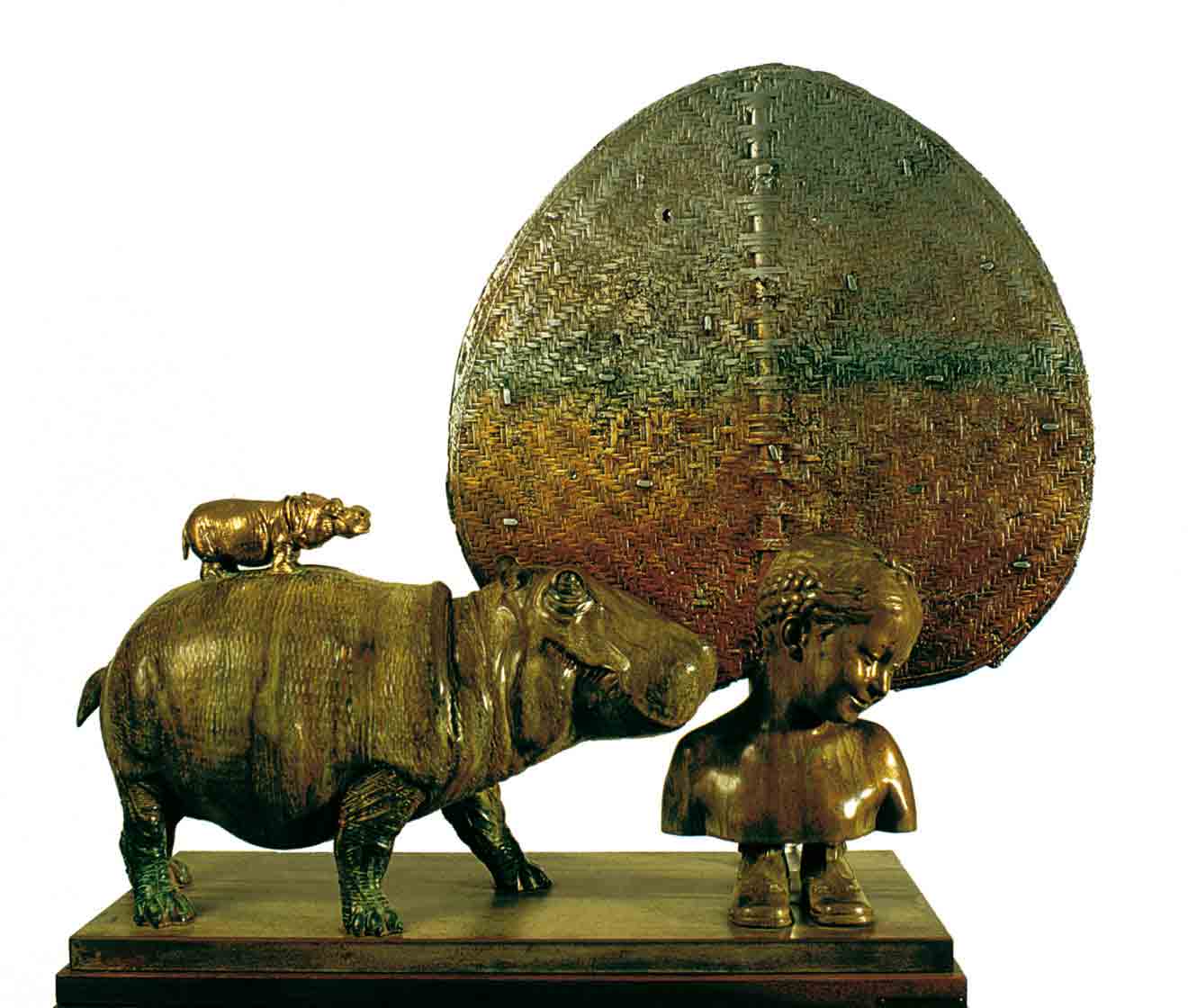Work: Mater amabilis
Original sculpture

Original
- Author
- Valeriano Trubbiani
- Date
- 1988 - 1989
- Period
- 20th Century
- Dimensions
- 102 cm high
- Technique
- casting, patination, assemblage
- Material
- bronze
- Space
- 20th Century and Contemporary
Photo: Maurizio Bolognini. Museo Tattile Statale Omero Archive.
Description
“Sculpting is a soft dream, told with hard materials”, Valeriano Trubbiani.
“Mater Amabilis” is a work in bronze, which is slightly higher than a metre, created by Valeriano Trubbiani. This work stands on a wooden base and depicts a female hippopotamus,carrying her little one, in golden bronze, on her rump. Next to mother hippo’s face is the bust of a little girl with a smiling face, slightly tilted to the opposite side. Their approach is affectionate. The girl’s hair is gathered in two braids that surround her nape and come together on her head with a ribbon. Her cheeks are round, her nose is small and she is looking towards the ground. The bust is supported only by a pair of “Mary Jane sandals”, which are typical children’s shoes that evoke a strong nostalgic appeal to childhood.
The unlikely juxtaposition of a mother hippo and a child is softened by the sense of motherhood that floats all around the composition, and which is the true bond between the human, animal and natural worlds. Even the fact that proportions between the various characters are not realistic (the girl’s head is almost as tall as the hippo and the calf is too small), does not stop us from perceiving the tenderness and the affectionate embarrassment between the protagonists. Behind the figures is a large leaf made of woven fibres that seems to wrap and protect the scene.
The statue is made of bronze and aluminium and has been treated with patinations that give the metals the appearance of onyx or banded agate. This work can be associated to another, more famous work from the “Mater Amabilis” series, which islocated in Piazza Pertini, in Ancona.This tenderness which is evident in these sculptures is rarely found in other works by the artist. In fact, Valeriano Trubbiani’s artistic search leans towardsan inner “bestial world”, where animals, for the most part, take on genetic mutations dictated by human vices and virtues. Trubbiani forces his “bestiary” to “act out” unnatural, absurd roles, stemming from the everyday cynicism of humanity and the irony of the artist.
